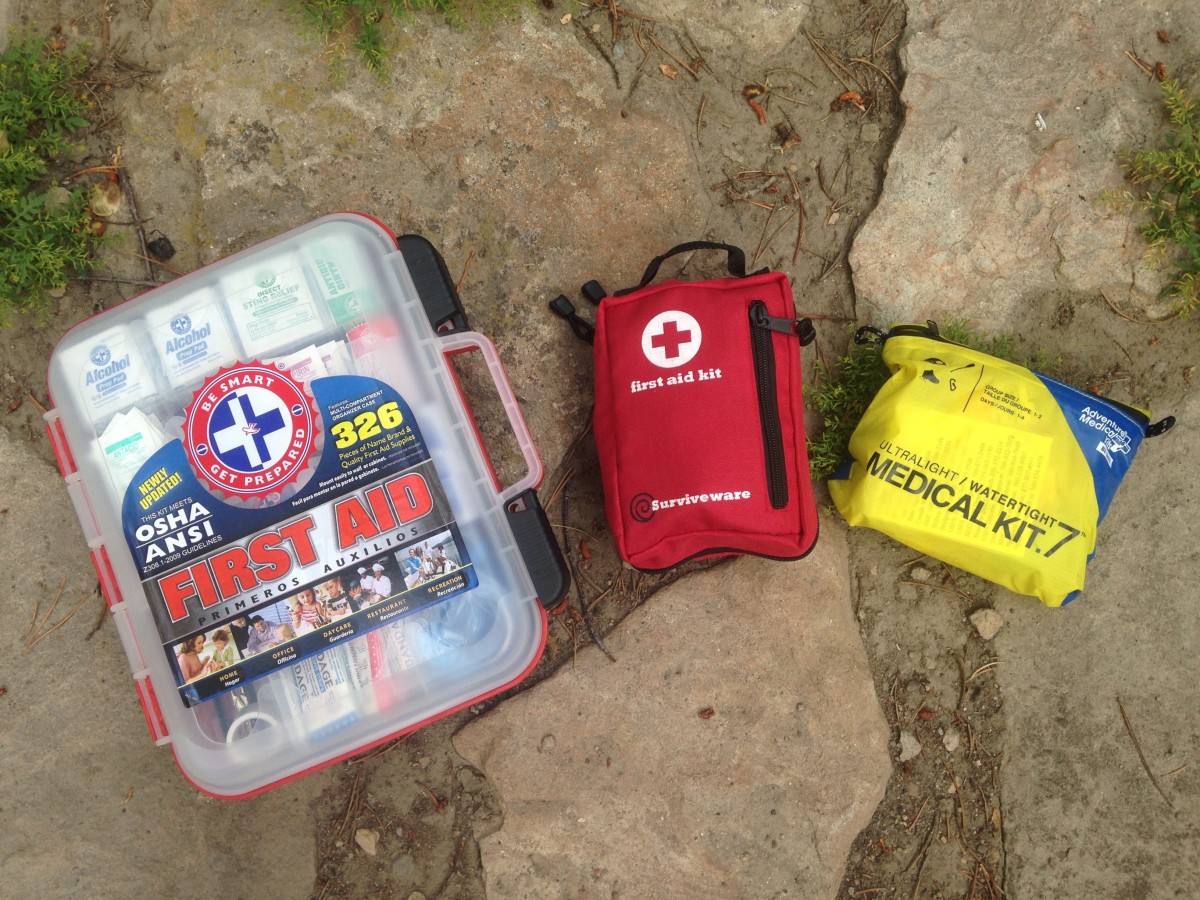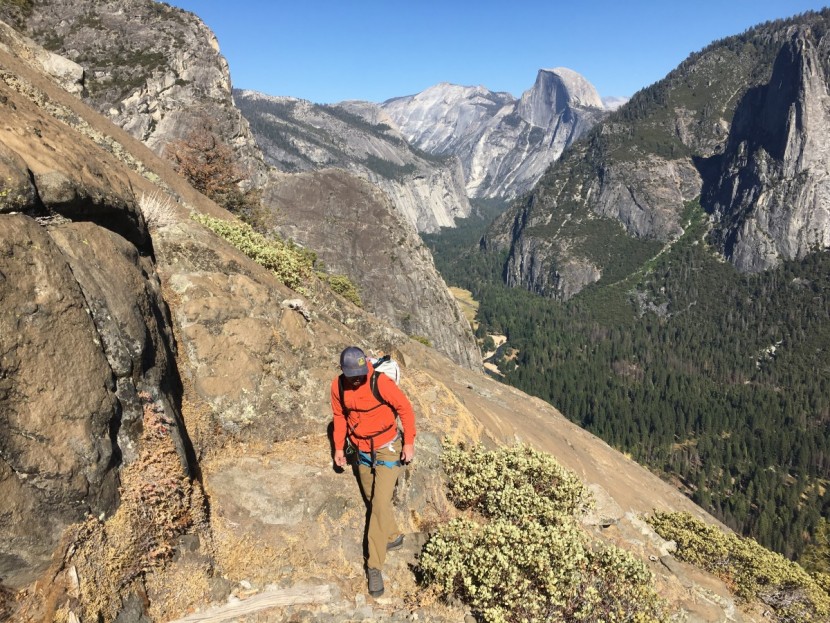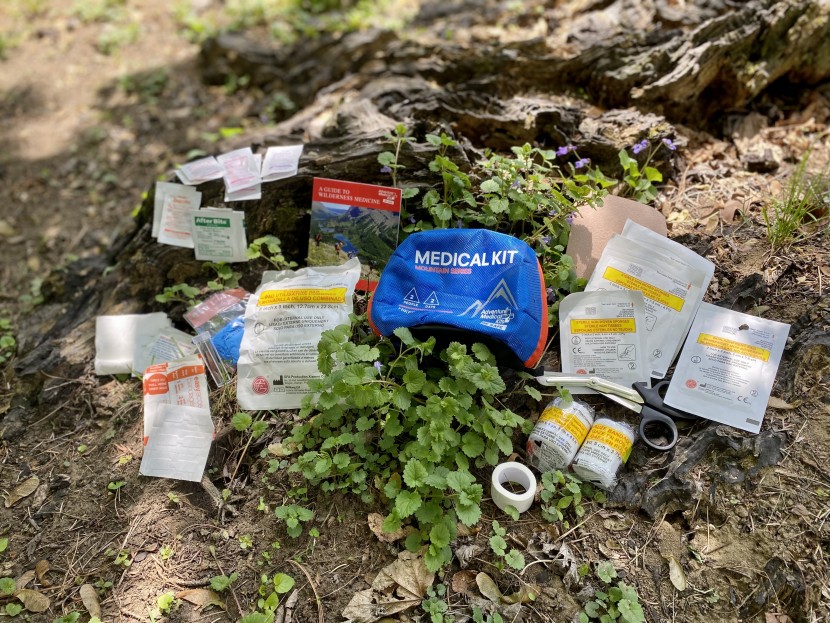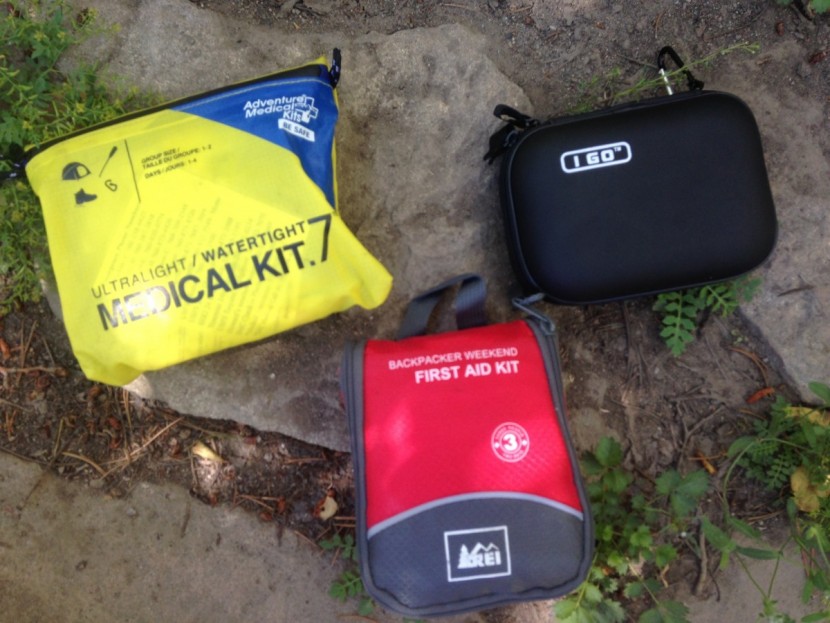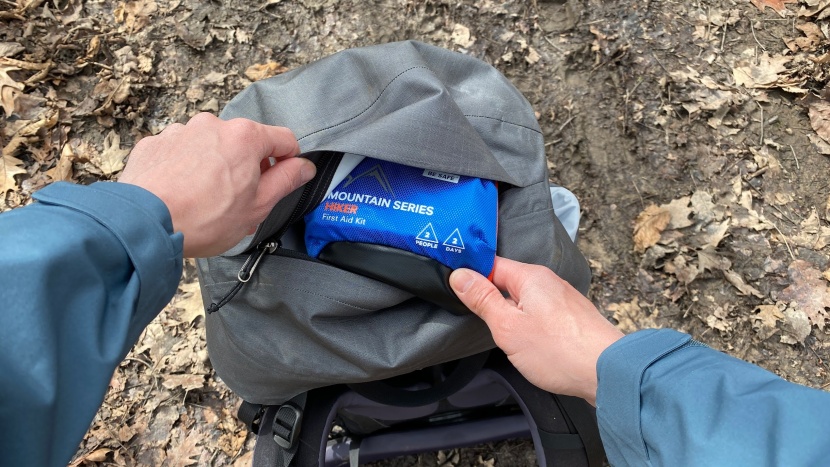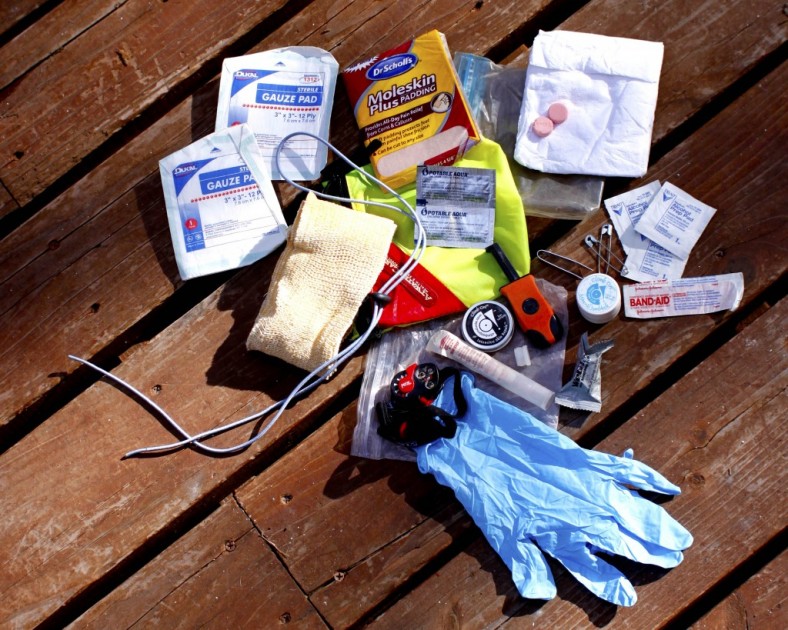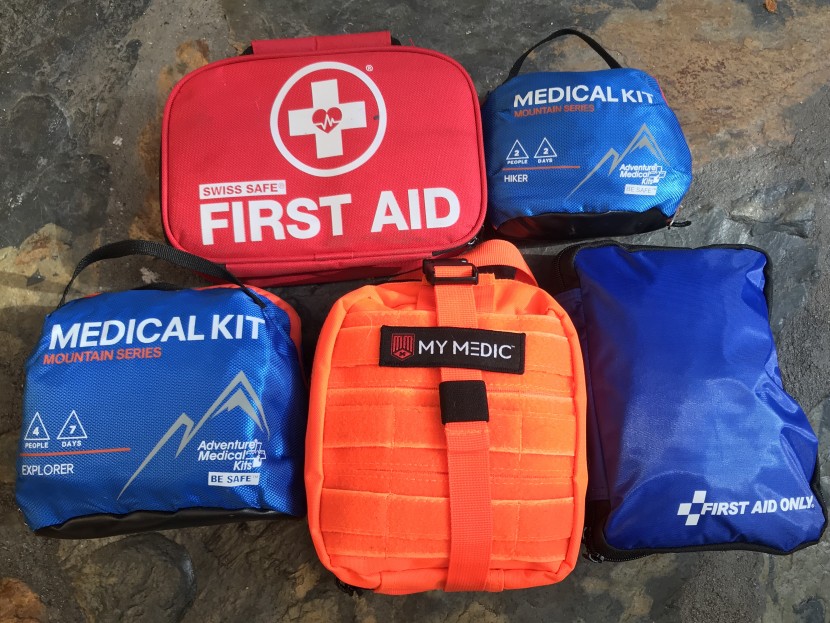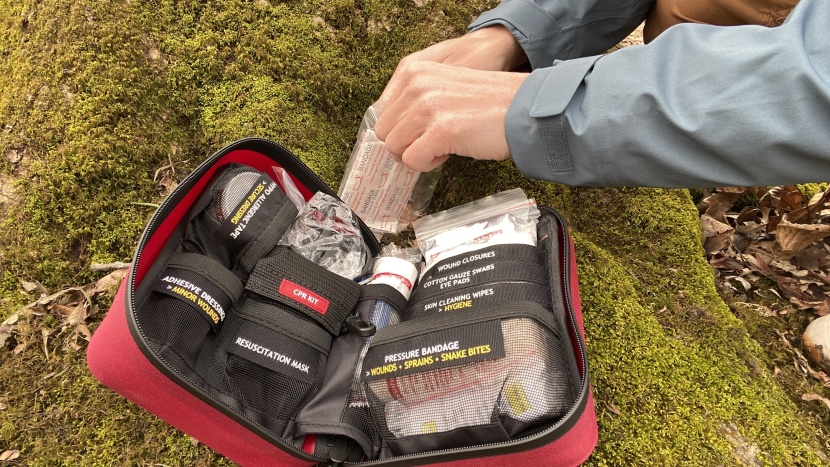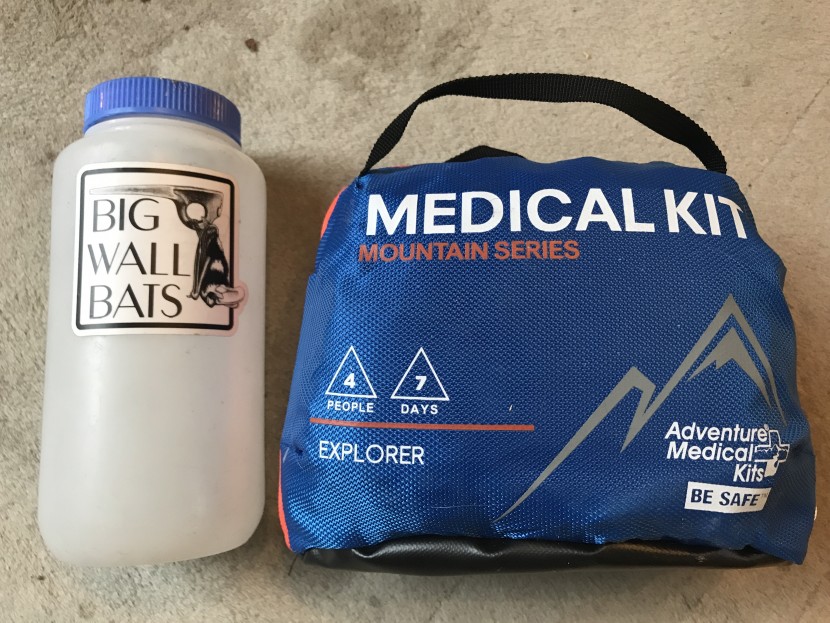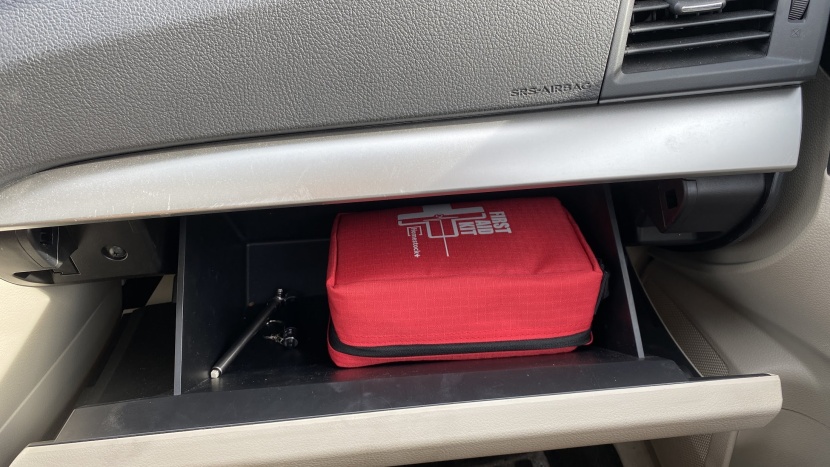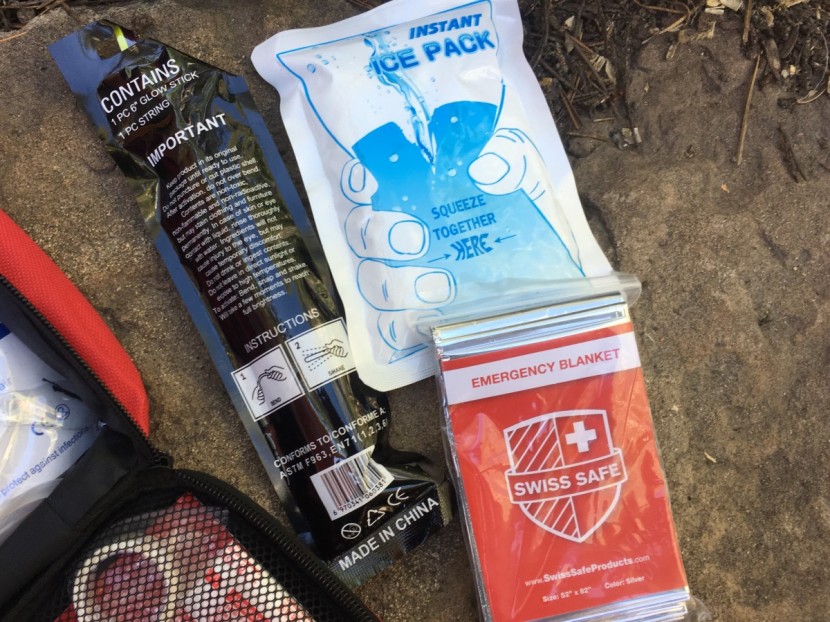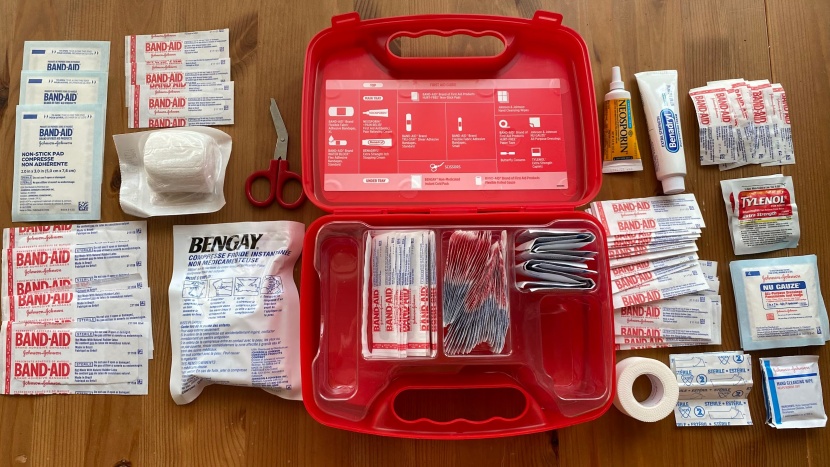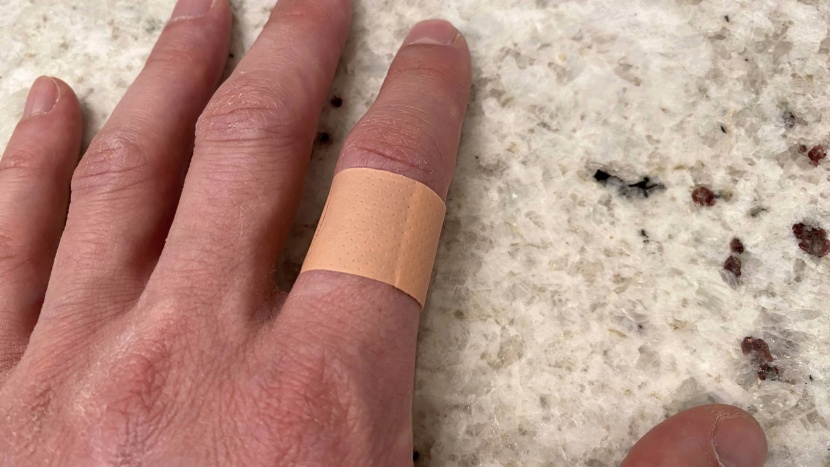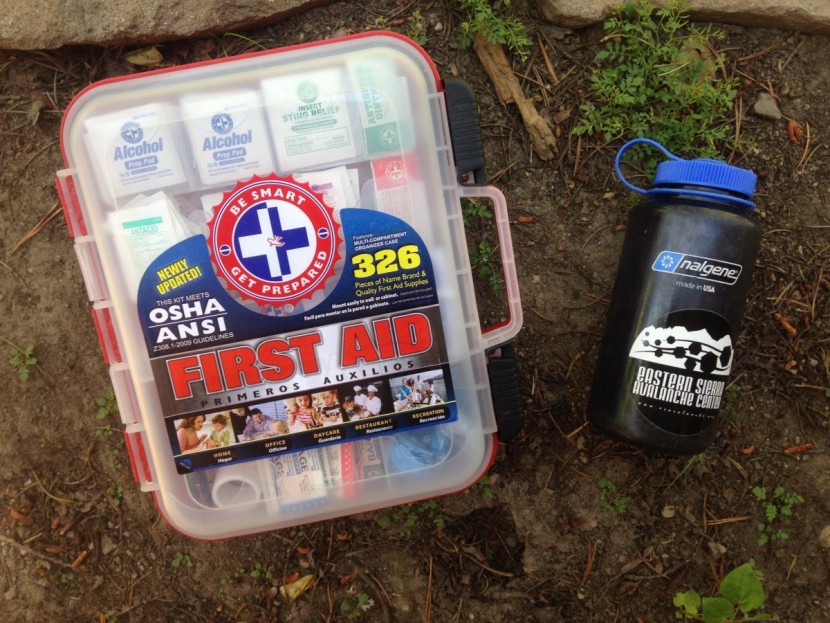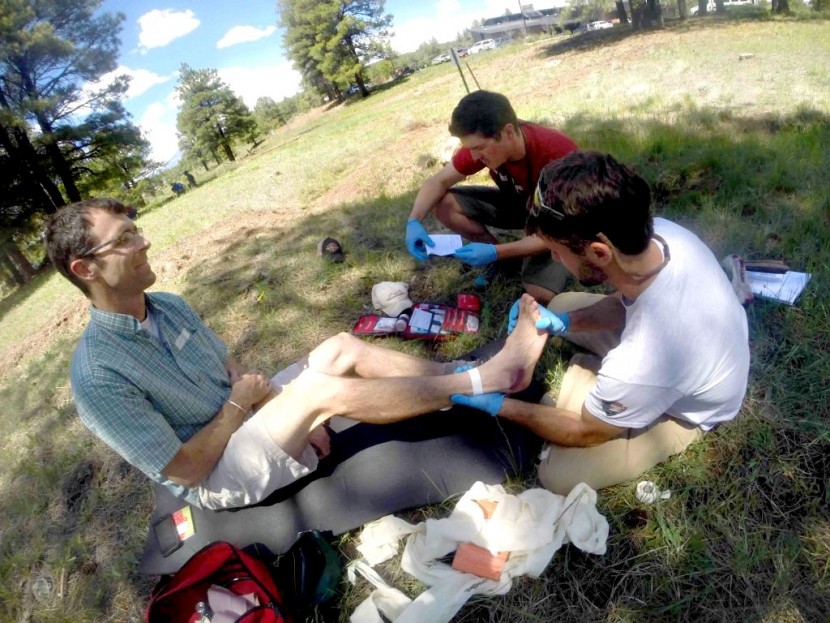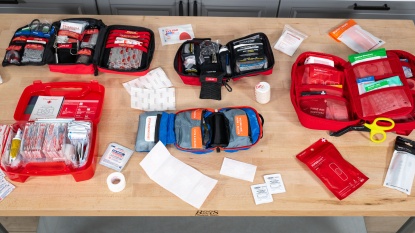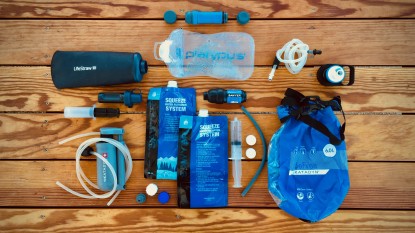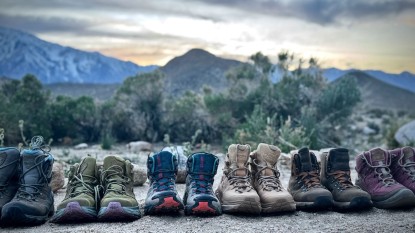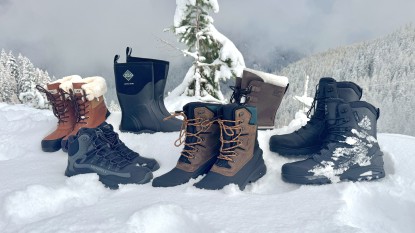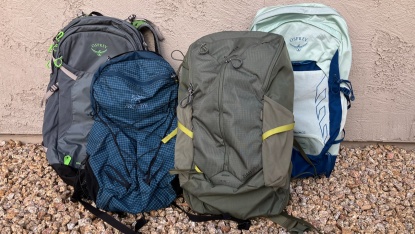First aid kits are the gear that we want to be the best, but we never want to actually use. So instead of letting you, the intrepid adventurer, figure out that your kit is bunk when you need it the most, our expert review staff has taken the time to write this article giving some handy advice on how to choose the best, most complete first aid kit for your intended application. The thing about first aid kits is that everybody needs one! No matter if you are an expedition climber in the Himalaya, a mountain biker on a day ride, a backpacker on an overnight trek, or just a cautious parent who wants to be prepared, you can benefit from having emergency supplies close at hand. The types of first aid kits, as well as the specific contents, change based on how we plan to use them, so reading this article may give you better clarity as you shop.
Weight Comes Fifth
Don't pay as much attention to weight when looking at first aid kits — it is our fifth most important metric — as lightweight kits either skimp on supplies or on construction. Decide what kit you need for the activity and trip length you are planning and then choose the right kit for that job.
Types of First Aid Kits
There are many types and sizes of kits available. The model you take on a two-week remote backpacking trip is not the one you need on a day hike close to civilization. We classified the different types available into five main categories (day use, overnight, expedition, car, and home), along with recommendations of what should be in each kind of kit and where you might purchase those items. Keep in mind that the following lists are suggestions and are meant to be overly extensive. You may find it more beneficial for you to weed through the following items to create a more specific first aid kit (or multiple models) for your desired activities.
Don't Be Afraid to Customize Your Kit
First aid kits are designed for general use. No matter which kit you decide to buy, customize it your individual needs. If you frequently get heartburn, add antacid tablets. If a kit has everything you need but the scissors are terrible, replace them.
Day-Use Kits
These are lightweight options appropriate for day hikes that take place a short distance from the car. Minimalist in content and design, they are carried in case of minor problems that occur on the trail, with the idea that if something major happened, advanced medical care is not far away. These kits are not designed to deal with any trauma or medical problems but can treat common cuts, blisters, scrapes, and burns. There should also be a roll of tape for injured ankles and some common over-the-counter medications to deal with headaches and pain relief.
The Mayo Clinic has some good guidelines if you are looking to customize your first aid kit. Our testers have spent a lot of time honing in on their kit's contents, and so here is what they like to carry:
Bandage Materials
- Assorted adhesive bandages; the American Red Cross recommends a kit have about 25 bandages in various sizes, which you can pick up in prepackaged assortments by reputable name-brand companies at your local grocer or pharmacy for just under five dollars.
- Gauze pads in various sizes; these pads are typically made of cotton for medical use and are most often applied as dressings in place of other types of fabrics that may burn or stick to a wound. They come in 3x3 inch and 4x4 inch sizes, and you'll want a few of each for your day use kit.
- Nonstick sterile pads are applied directly to the wound to provide cushion and protection while also creating an absorbing layer for any seepage.
Bleeding Control
- Medical or surgical gloves; avoid latex if possible and shoot for a nitrile glove such as the ones made by SafeTouch. Vinyl gloves are adequate but are lesser quality and tend to tear much easier.
Blister & Burn Treatment
- Blister relief, such as Moleskin from Dr. Scholl's, 2nd Skin, or Glacier Gel. Blisters can end up becoming big problems if left untreated, so any kit that has hiking in mind should include supplies to treat them, and extras should be added to kits without a deep inventory of blister related items.
CPR
- A breathing barrier with a one-way valve, used to protect the rescuer during CPR from the transmission of bodily fluids. You can pick up a keychain sized barrier from the Red Cross store that also includes instructions for correct use.
Instruments
- Fine point tweezers for splinters and other various pointy objects, i.e.: cactus needles. We like the small precision forceps much more than the longer metal tweezers, but whichever you use, make sure the point is not rounded, but pointy or square-tipped. No plastic tweezers should be considered.
- Safety pins
Medical Information
Even on day trips, it's a smart idea to bring along the following:
- Medical consent forms for your entire family.
- Medical history information for each family member or activity partner.
- Emergency phone numbers, including contact information for your family physician, your pediatrician if you have children, as well as local emergency services, road service providers, and your regional poison control center numbers.
Medications
- A pain relief medication such as acetaminophen (Tylenol) or ibuprofen (Advil), which also helps reduce swelling. For day hikes, one or two single-use packets are usually sufficient.
- Antihistamines to treat allergic reactions, such as diphenhydramine (Benedryl).
- Insect sting relief treatment for relief from both bites and stings, such as the Sting Eze pen.
Wound Care
- Antiseptic towelettes for cleaning and disinfecting wounds; we recommend wipes with a benzalkonium chloride (BZK) base such as Curad Alcohol Wipes. (These also work great for cleaning your keyboard.)
- Antibacterial ointment for protection against infection of burns, cuts, scrapes and other wounds.
- Compound tincture of benzoin, which is most commonly applied to the skin before a bandage, ankle wrap or moleskin donut to help it adhere longer. It is also used to protect your skin from an allergy to the adhering agent itself.
- Butterfly bandages for wound closure; you can purchase a box of 100 for under $6.
- Waterproof medical adhesive tape can be used to keep bandages in place; we recommend a waterproof tape, but in a pinch, you could also use athletic tape that you may already have with you.
Emergency Supplies
- A whistle (for emergency rescues), which may also be found on your backpack.
- A keychain-sized bottle of sunscreen.
- A waterproof bag, like a sandwich-size Ziploc, with an emergency fire starter and some toilet paper.
- An extra headlamp (recommended) or flashlight. There are many headlamps on the market that don't add much weight or bulk to your pack but can make a huge difference if you get stranded after dark.
Overnight Kits
These models serve the needs of a small group that is far enough from the trailhead to require more self-sufficiency than day use kits provide. They include basic over-the-counter medications, wound care supplies, blister treatments, and a roll of tape for ankle injuries. Overnight models may also include splinting material, such as a SAM Splint, elastic Ace wraps, and triangle bandages. Whenever your trip is going to take you more than two hours away from a healthcare facility such as an urgent care center or an emergency room, we recommend an overnight model, even if just out for a day trip.
If on expeditions or even overnight trips where there is limited or no cell service to contact help, we strongly suggest carrying a satellite communicator or personal locator beacon (PLB) from our review. If you have a serious emergency that either your first aid kit or your training does not prepare you for, being able to contact a Search and Rescue team might make all the difference.
Here are some more items you'll want to carry with you in addition to the basic supplies found in a day-use model.
Bandage Materials
- Rolled gauze.
- Stretch-to-conform rolled bandages such as the CONFORM stretch bandage.
- Liquid bandages offer a breathable, waterproof, and flexible protective barrier for small wounds and even blisters, such as the New-Skin Liquid Bandage.
- Oval eye pads; Dr. Don W. Houghton, O.D., says any over-the-counter product is sufficient. While several sources recommend the addition of these pads to your kit, Dr. Houghton does caution that patching an eye with pads can allow a secondary infection to set it with anaerobic bacteria.
Bleeding Control
Larger quantities of gloves, and potentially:
- Hemostatic gauze, which aids in blood clotting to stop bleeding quicker.
- A medical waste bag or box that can be used to dispose of sharp items.
Blister & Burn Treatment
- Aloe vera gel for sun exposure relief.
- Hydrogel-based pads, which offer cooling relief for burns and can be used for absorbing drainage from wounds to help prevent infections.
Fracture & Sprain
- Elastic wrap, such as the Ace bandage for immobilizing joints and securing bandages in areas where you need to retain maximum flexibility.
- A triangular cravat bandage; we recommend stocking your kit with two or three of these and also encourage you to familiarize yourself with these types of bandages as they are extremely versatile.
- Finger splints.
- A SAM splint, for supporting and immobilizing fractures.
- Athletic tape; a quality roll of two-inch athletic tape is an indispensable tool for taping injured ankles and providing stability to the joint. It can mean the difference between a hiker with a twisted ankle needing rescue and being able to hike out under their own power.
Instruments
- An irrigation syringe with 18-gauge catheter for flushing wounds.
- Steel sewing needle with heavy-duty thread.
- Trauma shears, also known as tuff cuts, are blunt-tip scissors used to safely cut clothing from an injured person.
- A single-edge razor blade, though any disposable razor is sufficient and cheap enough for a variety of uses.
- Standard oral thermometer; anything you find over-the-counter at your local pharmacy is sufficient.
Medical Information
- A compact first aid guide, like the Backcountry First Aid Guide by Buck Tilton, co-founder of the Wilderness Medicine Institute.
- A small notepad with a waterproof writing utensil.
Medications
- Aspirin for heart attack response. However, according to the Mayo Clinic, you should never give aspirin to children.
- Antacid tablets, like Tums, to settle upset stomachs caused by indigestion and to provide heartburn relief.
- Loperamide tablets are used to soothe the effects of diarrhea, as well as bloating and gas relief.
- Throat lozenges.
Wound Care
- First-aid cleansing pads with a topical anesthetic to kill germs and infections surrounding wounds.
- Cotton balls and cotton-tipped swabs.
- A small bottle of sterile saline, which is an eye irrigating solution used to flush out chemicals or foreign bodies.
- Petroleum jelly, or similar lubricant in case of chafing.
- Skin repair bar or skin repair creme for minor rips, tears, and cuts - we recommend the Climb On! brand. They have great options for outfitting your first aid kit.
Emergency Supplies
- A small roll of Duct tape (everything can be fixed with duct tape, right?).
- A magnifying glass.
- A small mirror.
Personal Hygiene
- Hand sanitizer, either BKZ- or alcohol-based.
- Lubricating eye drops.
- Anti-itch eye drops for allergy relief.
- Biodegradable soap, such as a concentrated soap like Campsuds.
- A water-treatment system; we recommend carrying a backpacking water filter and taking backup chlorine tablets.
- Sunscreen, with at least SPF 30. Look for UVA and UVB protection.
- Lip balm; like the Climb On! Lip Lube.
- Insect repellent; a head net may also come in handy.
- Disposable Human Waste Bags, like the Restop 2 Disposable Travel Toilet if you are camping in an area where you need to pack out your own waste.
Expedition Kits
This type of first aid kit serves base camp or large group needs. Think multi-day rafting trips and remote mountaineering excursions. Expedition models don't skimp on tools or medications. Weight and size are not the main factors in deciding what to stock in them. They are essentially remote medical stations for situations where access to medical facilities is limited. Share the group weight accordingly.
If you're building an expedition kit, include some prescription medications, such as altitude medications, antibiotics, and pain management medications, which can make a huge difference in a remote wilderness emergency. To obtain these products, you'll need to discuss the situation with a medical doctor, as no company sells expedition models that contain prescription medications. Expedition models will contain everything found in overnight and day-use kits but greater quantities, as well as some additional items listed below.
Instruments
- A low-reading thermometer for detecting hypothermia.
- A pulse oximeter; a device that can help take heart rate as well as give a reading on a patient's blood oxygen level, a useful piece of information when diagnosing altitude illnesses.
Medications
- Poison ivy or oak preventative, such as the Ivyx Pre-Contact Solution, which does not allow the plants' oils to be absorbed by your skin.
- Poison ivy and oak treatment; the American Academy of Dermatology recommends calamine lotion (the same stuff used for chicken pox relief) and for mild exposure, hydrocortisone cream; we suggest you carry both in your kit.
- Glucose or other sugar for treating hypoglycemia, such as the ReliOn Glucose tablets.
- Oral rehydration salts, such as Recover ORS, for replacing necessary electrolytes lost during a bout of diarrhea, food poisoning, stomach flu, or excessive exercise.
- Antifungal foot powder; like Gold Bond.
- Prescription medications, including backups of any of your necessary personal medications. By law, no first aid kit comes with prescription medications. Talk to your physician about obtaining small amounts of antibiotics, pain, or altitude medications for your expedition kit.
- Injectable epinephrine, such as the EpiPen, for treating severe allergic reactions. It must be obtained through a prescription from your physician.
Emergency Supplies
- A top-rated bivy sack for emergencies.
- A satellite messenger or personal locator beacon is worth carrying a to contact advanced care in the event of a major emergency for those trips far from the trailhead. See our best satellite messenger review for our favorites.
Car-Based Models
Many people do (and more should) carry a large first aid kit in their car. Bulky items or weight do not constrain these models. They are ideal for trailhead first aid, car camping, and when stranded roadside. They are used for all kinds of first aid opportunities, such as climbing areas or skateboard parks that are near to a parking lot. Car-based models include items not typically carried on a backpacking trip, like chemical ice packs to help reduce swelling, light rain ponchos, or glow sticks for nighttime visibility on the road. These kits should be put in the trunk or next to a spare tire, so it is there when you need it.
A car-based kit should contain all of the basic first aid supplies similar to those found in a day-use model listed above. In addition, some extra items are useful for a roadside situation.
Fracture & Sprain
- Instant cold packs; like the Dynarex Packs.
CPR
- Full CPR Rescue Mask; since weight is not a consideration, you can keep a full CPR mask in your car-based kit.
Emergency Supplies
- An emergency heat-reflective thermal blanket.
- Glow sticks for nighttime visibility on a roadway.
- Disposable rain jacket.
Home-Based Models
Though it isn't as important for a home-based model to be self-contained (you might have a variety of supplies strewn about your house or apartment), it is a good idea to keep them all in one area for quick and easy access. A home-based model is not limited by weight.
Therefore, you can keep larger amounts of your commonly used items, like band-aids, full-sized tubes of antibiotic ointment, and hydrocortisone cream, or bottles of pain and fever relief medication.
This kit should also have a thermometer and a list of emergency contact numbers, such as poison control and family members' doctors. While our review includes many models designed for at-home use, your overnight or expedition model can double as a home-based kit when not in use on the trail. Be sure to double-check all your supplies before heading out on your next adventure.
How to Utilize Your First Aid Kit
A first aid kit is a necessity for anyone. No matter where you are or what sport or outdoor activity you're involved in, you never know when you may find yourself in need of first aid supplies. It is better to be prepared for the worst than to find yourself without the right tools in an emergency situation. The American Red Cross recommends that you keep a first aid kit in your home and car, and it's a smart idea to always carry one with you into the backcountry no matter how far you are from the trailhead. However, these supplies are only as effective as the knowledge of their user; informing yourself on the basics of first aid care is a critical step in dealing with injuries or medical emergencies.
At a minimum, a basic first aid and CPR course from your local Red Cross Office is the first step towards getting the skills you need to perform the basic care in an urban or front country setting. Those looking to increase their knowledge and abilities for providing care in the backcountry have many options in wilderness medicine courses to choose from. Reputable groups such as the Wilderness Medicine Institute of NOLS and Wilderness Medical Associates International have many programs throughout the United States, from 24-hour programs to intensive month-long Wilderness EMT programs.
When it comes to selecting the best first aid kit for your needs, there are many options available to you. You can purchase pre-made kits of various sizes depending on our intended activity and length of trip, or you can always assemble your own kit.
First Aid Kit Maintenance
It's a good idea to give your first aid kit a regular checkup. If you're using it a lot, particularly a home-based model, have a look every three months to ensure that no medications have expired and that your tools are working properly. The last thing you want is for your child to be running a fever in the middle of the night only to find that your thermometer is broken, or to need a bunch of band-aids and discover that you have completely run out of them. While some medications lose their potency after their expiry date, others turn toxic. Be sure to always check the expiry dates before taking or administering any medication, and properly dispose of the ones that are past date. We tend to prefer the kits that have an inventory to use as you check your kits periodically for completeness. Otherwise, you may understock your kit.
Final Thoughts
A first aid kit does not make you any more capable in the use of its equipment, although some include a wilderness medicine handbook. To make the best use of this kit, you need some training. We strongly encourage folks to seek out a First Aid and CPR course for those operating in an area with a rapid emergency response time, and a wilderness first aid or first responder course for those who recreate in environments farther from definitive medical care. That way, you are prepared not only with the physical equipment for how to treat and care for patients, but you are also prepared with the training in what to do. We hope that you never have to use these kits and that you stay safe out there, doing whatever activity you love.

